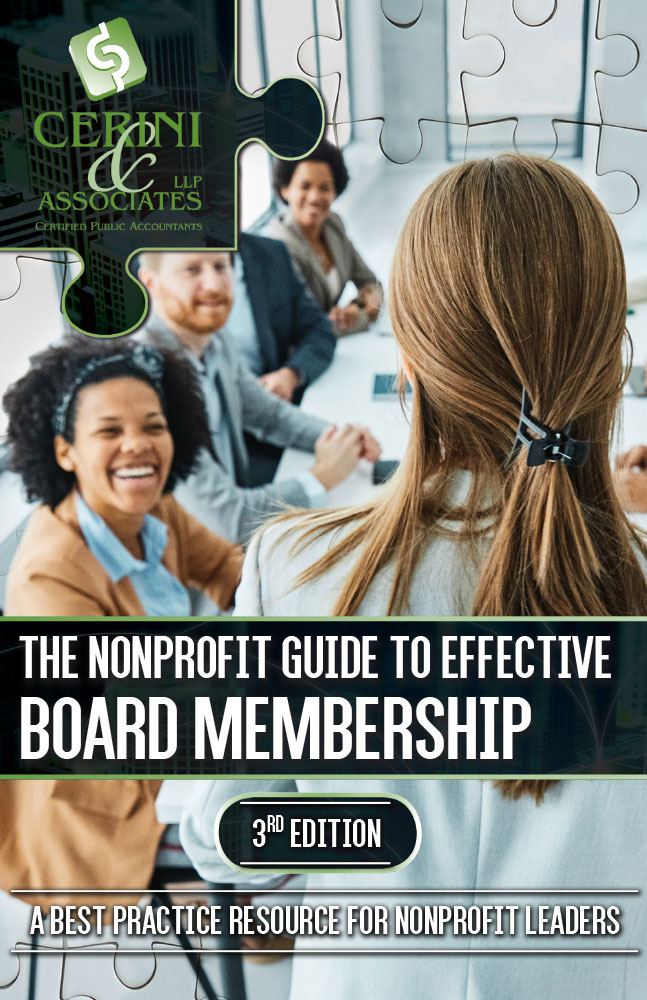Having diverse perspectives on your nonprofit’s board of directors is critically important. Each person brings their own personal and professional contacts and life experiences to their service on a nonprofit board. With a diversity of experience, expertise, and perspectives, a nonprofit is in a stronger position to advance equity, plan for the future, make prudent decisions, and take full advantage of opportunities.
Understanding Diversity, Equity, and Inclusion
Diversity encompasses a wide range of personal characteristics and backgrounds, including race, ethnicity, gender identity, sexual orientation, religion, class, language, and more. It asks: Who is present? Whose experiences shape our discussions?
Inclusion is the intentional effort to create a welcoming environment where everyone feels valued and can contribute meaningfully. It asks: Who is participating? Are all voices heard and respected?
Equity involves fair treatment by acknowledging and addressing historical disparities to ensure everyone has access to opportunities. It asks: Does everyone have a fair chance? How can we dismantle barriers?
The Importance of DEI in Nonprofit Governance
Research shows that diverse teams drive innovation and achieve better outcomes. The same applies to nonprofit boards. When board members bring diverse perspectives, they enhance decision-making, better reflect the community served, and foster creativity in addressing challenges.
Practicing DEI in the Boardroom
Assessment: Begin by assessing your board’s current diversity and inclusion practices. Conduct surveys or focus groups to understand perceptions and identify areas for improvement.
Recruitment: Intentionally recruit board members from diverse backgrounds. Expand your network beyond traditional circles to include voices that reflect your community’s diversity.
Retention: Once diverse members are onboard, ensure they feel valued and included. Foster a culture where all perspectives are respected and contribute to decision-making processes.
The Power of Diversity
- Better Decision-Making: Diverse perspectives enable boards to identify a full range of opportunities and risks when making critical decisions.
- Enhanced Connections: A diverse board reflects the community it serves, facilitating access to community resources, partnerships, and donor engagement.
- Improved Adaptability: Diversity helps nonprofits navigate external changes effectively, ensuring relevance in dynamic environments.
- Preventing Stagnation: Diverse boards avoid becoming insular, fostering innovation and growth through fresh perspectives and ideas.
- Support for Leadership: For leaders from underrepresented backgrounds, a diverse board provides crucial support and validation.
- Deeper Insights: Diversity ensures a deeper understanding of the lived experiences of constituents and the broader community, enriching decision-making and programmatic relevance.
Practice Pointers for Cultivating Diversity
Even though nonprofit staff and board members WANT to diversify the composition of their boards of directors, data show that not much progress has been made. What if each charitable organization committed to taking a few of these steps during the next year?
- Implicit Bias Awareness: Assign homework or dedicate time at board meetings for members to take implicit bias quizzes or participate in bias awareness training to facilitate discussions on diversity implications in board recruitment.
- Resource Sharing: Include resources on diversity, inclusion, and equity in each board packet to familiarize members with the rationale and need for diversity, stimulating intentional conversations about commitment.
- Articulate Commitment: Adopt a statement affirming the nonprofit’s commitment to diversity and inclusivity, prominently displaying it on the organization’s website to signal inclusivity to prospective board members.
- Skills-Based Recruitment: Focus on recruiting board members based on skills and expertise rather than superficial attributes, ensuring diverse representation without tokenism.
- Proactive Recruitment: Set concrete goals for board member diversity, assigning accountability for outreach efforts and celebrating achievements to reinforce commitment.
- Broaden Candidate Pool: Consider candidates at various career stages and backgrounds, reflecting the nonprofit’s beneficiaries and community supporters.
- Utilize Technology: Post board position descriptions on career sites and job boards to attract diverse candidates beyond traditional networks.
- Community Engagement: Solicit board member recommendations from the nonprofit’s beneficiaries and engage them in the recruitment process.
- Challenge Assumptions: Instruct search consultants to present diverse candidates who may challenge board norms, promoting broader perspectives and combating homogeneity.
By prioritizing diversity and inclusion on nonprofit boards, organizations strengthen their capacity for impactful leadership, innovation, and community engagement. Embracing diversity not only aligns with ethical imperatives but also enhances organizational resilience and effectiveness in pursuing mission-driven goals.






No comment yet, add your voice below!